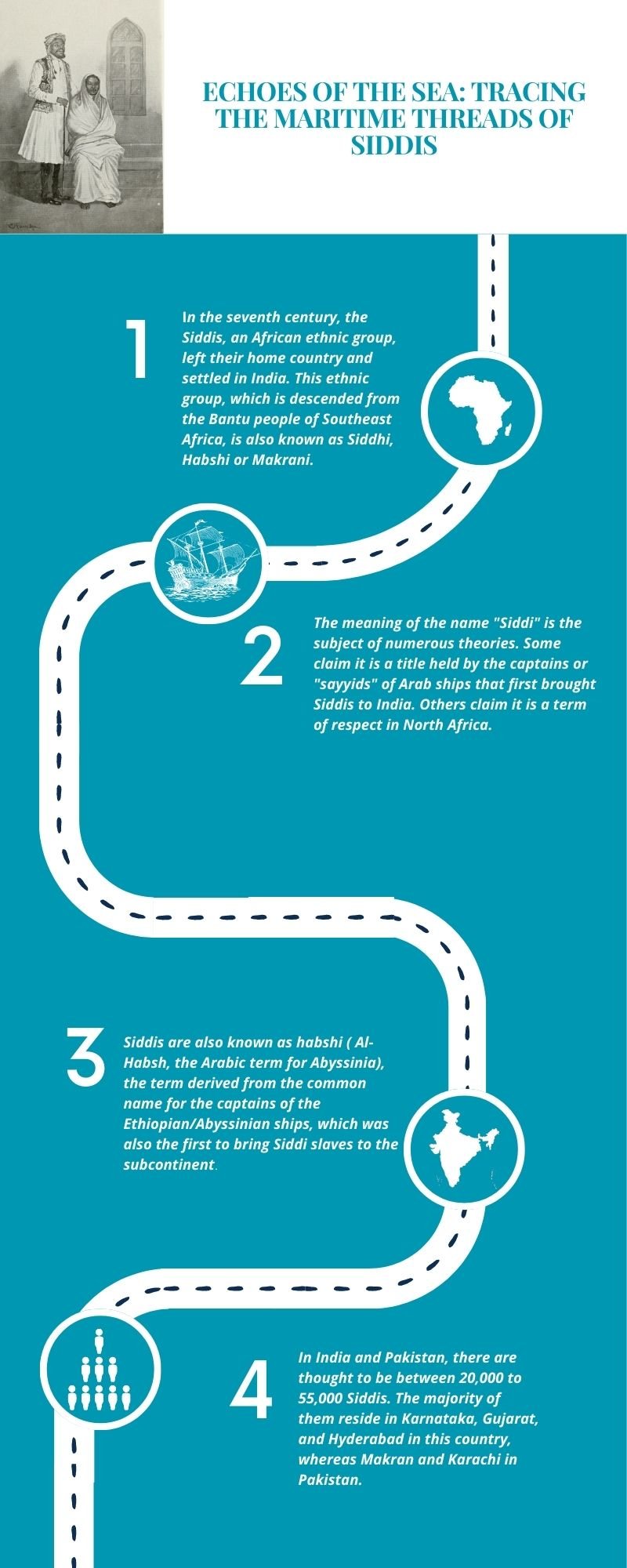
The Siddi also recognized as Sheedi or Sidi are an African diaspora along the coastal regions of India that traces its ancestry from east Africa, while a significant number traces the lineage from the Bantu community. There are different interpretations regarding the term “Siddi”, some scholars hold the opinion that “Sidi” is derived from the Arabic word, Shyd meaning, “master” or “ruler” while other scholars adhere to the standpoint that the origin of “Sidi” is from Arabic word Saydi which means captive and slave. According to present-day population measurements, there are about 50,000 to 60,000 Sidis located mainly in Karnataka, Gujarat, Hyderabad and Makran and Karachi in Pakistan. Shihan de Silva Jayasurya, states that, “Initially, Africans in India seem to have been called Habshi, then the word cafire seems to have been introduced by the Portuguese from the late 16th century up to the 18th century. The word Kaffir (from the Arabic word qafr which means ‘non-believer) does not imply that one’s origins are African. It is not a derogatory term, in this context. It is not clear exactly when the terms Habshi and Kaffir began to decline in use. The term Sidi seems to have been introduced by the British in the 19th century for the Africans in Gujarat and Karnataka today. Africans in Andhra Pradesh call themselves Chaush as they identify themselves with Yemeni Muslims. They have multiple identities and also call themselves Sidi among other ethnonyms.”
Though it is difficult to map the exact date it is generally accepted that the historicity of the Siddis can be traced back to roughly 628 AD. The maritime linkages between the regions i.e., India and Africa can be traced back to Indus Valley Civilisation. The geographical proximity and the effortlessly sailable Indian Ocean have played a very crucial role in shaping the dynamics between India and Africa, fostering cultural exchanges since time immemorial, the first Siddis were brought by Arab merchants on ships. They initially served as slaves but later some of them were able to climb the social ladder and served in important positions at the courts while others provided service as soldiers and loyal servants. They were revered for their courage and military prowess and made up a sizable portion of the armies of the various Sultanates, the Mughals, and even the Nizams until the 20th century. The army of the Gujarati Sultans included a significant number of African soldiers as well. The Siddi Sayyid Masjid, one of Ahmedabad’s most well-known landmarks, was built in the 16th century at the request of a Siddi soldier Shaykh Sa’id al-Habshi Sultani. Additionally, there were Siddis who did not engage in warfare but instead worked in a variety of occupations such as Yaqut Dabuli, a well-known Ethiopian architect under Sultan Muhammad Adil Shah (reigned 1627–1656), who was in charge of the intricate colour decoration of the large mihrab in the Bijapur Jami Masjid.
The status and significance of former local power elites, such as the Siddi or Habshi magnates, was significantly diminished as a result of the British occupation of India in the late 19th and early 20th centuries. However, even during this time, a few members of India’s dwindling African community stood out. For instance, Maharani Bamba Duleep Singh, a half-Abyssinian married to Maharaja Duleep Singh, the last ruler of the Sikh empire (deposed by the British in 1848), or the Siddi rulers of another princely state of Sachin, which existed in Gujarat from 1791 to 1948, recognised by the British Raj as the rulers of separate princely states of Janjira and Jafarabad.
Many Siddis today are completely unaware of their origins, and the majority of them have never even heard of Africa. The Siddi communities differ in different regions of India because they have adapted to the local cultures by accepting their religions, languages and customs.


